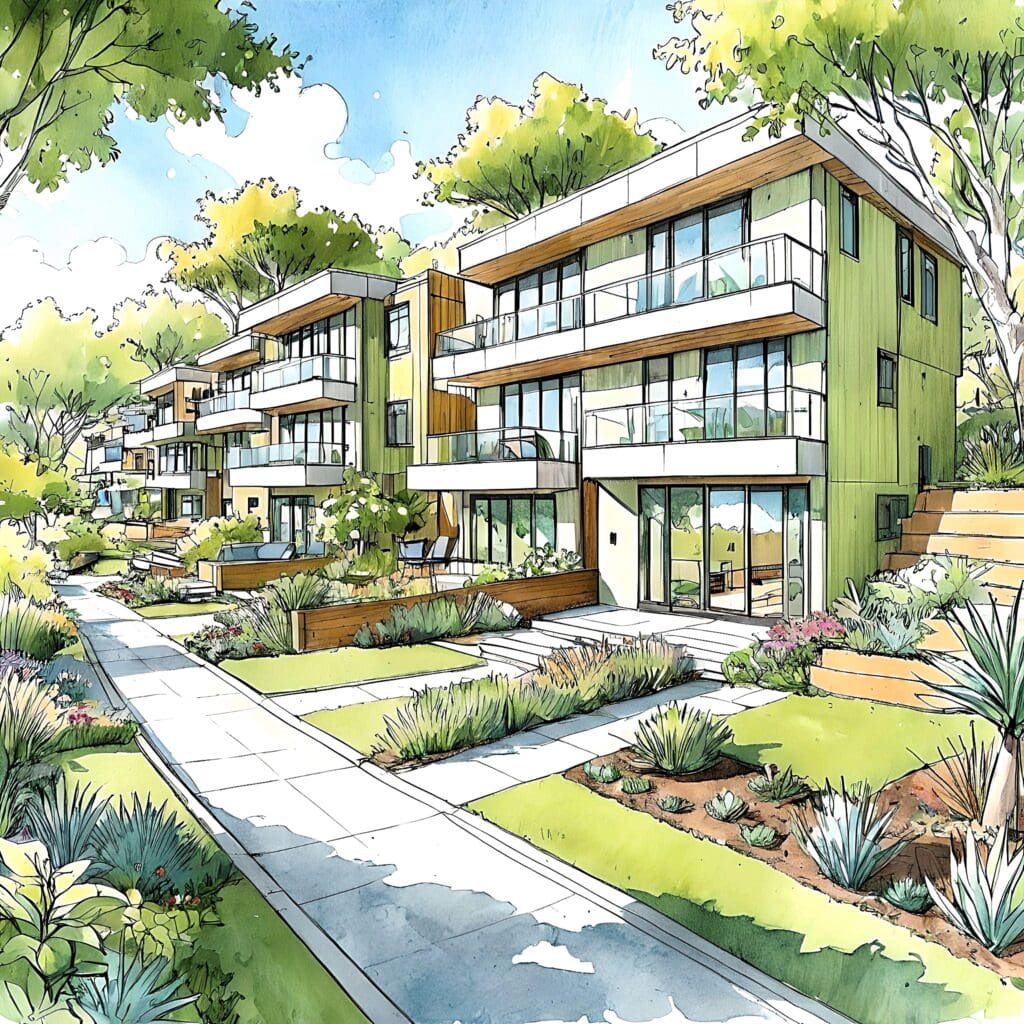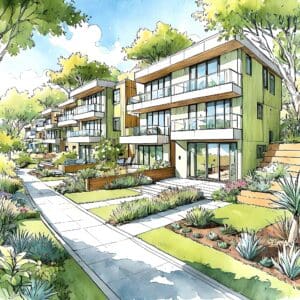Sustainable Housing – Innovation and Resourceful Living

Share to Social Media

Sustainable Housing – Innovation and Resourceful Living
Imagine a home that feels as modern and innovative as the technology we use every day. It powers itself with sunlight, collects rainwater for its garden, and adjusts the temperature to perfection—all while helping its owners save on energy bills. This isn’t just a futuristic dream; it’s the reality of sustainable housing, a movement that’s reimagining how we live, design, and build.
AMG Presents Moonboots
From energy-saving features like smart thermostats to stunning green roofs that bring nature closer, sustainable homes are blending creativity and functionality in ways that inspire. Whether it’s innovative materials that give old resources new life or entire neighborhoods designed for harmony with their environment, the benefits are clear: efficiency, beauty, and a fresh way to think about our spaces.

Design. Build. Launch. No Code Needed.
From portfolio websites to full webshops – Elementor lets you build custom WordPress sites visually, fast and beautifully. Join 14M+ users who choose freedom, flexibility, and full design control.
The rise of sustainable housing is more than a trend—it’s a lifestyle shift that’s making homeownership more resourceful, more innovative, and more connected to the world around us. Let’s explore how this vision is taking shape and what it means for the future of living.
The Growth of Sustainable Housing
In cities across the Western world, a quiet revolution is reshaping how people think about home design. From the sleek solar-powered townhouses of Copenhagen to the earthy, off-grid homes of California, sustainable housing is moving from niche to necessity. With rising energy costs and a growing focus on efficient living, homes designed with sustainability in mind are rapidly gaining appeal.
This isn’t just about saving energy; it’s about rethinking what a home can be. Designers and architects are integrating green roofs, rainwater harvesting systems, and energy-efficient features, blending functionality with artistry. Projects like the Millfield Green retirement community in the UK exemplify this shift, offering energy-smart homes that combine modern living with a closer connection to nature.

Younger generations are driving this change, prioritizing sustainability over traditional luxuries. Governments and organizations are stepping in too, introducing incentives and grants to make green building more accessible. Across industrialized countries, people are proving that sustainable living can be both responsible and inspiring.
What Makes a Home Sustainable?
A sustainable home isn’t just a building—it’s a philosophy of living. Energy efficiency forms the foundation, with smart insulation, triple-glazed windows, and renewable energy systems like solar panels and wind turbines. Homes are becoming self-reliant, not only generating their own energy but sometimes producing a surplus.
Materials matter, too. Eco-conscious builders are turning to bamboo, recycled wood, and cross-laminated timber to reduce resource waste. In Europe, CLT has emerged as a preferred choice for its strength and environmental benefits, while reclaimed materials add character and sustainability to homes. Another exciting material making waves is hemp, used to create insulation with impressive properties. Hemp insulation is not only highly efficient at regulating temperature but is also breathable, biodegradable, and incredibly durable, offering a natural and sustainable alternative for modern construction.
Water conservation plays a vital role. Features like rainwater harvesting systems and permeable pavements are becoming commonplace, helping reduce waste while integrating seamlessly into urban spaces. Portland, Oregon, is a leader in these designs, turning water-smart planning into a model for green cities.
From passive solar designs that maximize natural light to homes with green roofs teeming with vegetation, sustainable living redefines the relationship between humans and nature. Each element tells a story of innovation and respect for resources.
Benefits and Challenges of Sustainable Living
Eco-friendly housing offers profound advantages. Energy-efficient homes reduce utility bills, while renewable energy systems like solar panels often generate income through energy buy-back programs. Germany’s “KfW Efficient House” initiative is a great example, where homeowners can access low-interest loans to upgrade their homes and save over time.
The innovative designs of sustainable homes also promote healthier, more enjoyable living environments. Non-toxic materials and improved ventilation systems create spaces that are safer and more comfortable. Meanwhile, shared initiatives like community gardens and energy-sharing programs foster stronger connections among neighbors, showing that green living isn’t just about homes—it’s about building better lives.
Of course, these benefits come with challenges. Upfront costs for technologies like solar panels or smart systems can feel daunting. Developers may also hesitate to adopt green practices due to misconceptions about demand. However, solutions are emerging. Governments across the U.S. and Europe offer tax credits and grants, while educational campaigns are helping homeowners and developers embrace the possibilities.
The Future of Sustainable Housing
The future of sustainable housing is both thrilling and transformative. Net-positive homes are emerging as the next frontier, producing more energy than they consume. Advanced solar and wind systems, kinetic energy floors, and even algae-based bio-reactors are entering the scene. These innovations blur the line between science fiction and reality.
Technological breakthroughs like 3D-printed homes are also revolutionizing construction. Projects like “Project Milestone” in the Netherlands have shown how 3D printing can reduce waste, lower costs, and create beautifully intricate designs. These homes aren’t just efficient—they’re artistic statements that push the boundaries of what housing can be.
Urban planning is also evolving. Cities like Hammarby Sjöstad in Sweden are setting the bar with neighborhoods designed as holistic systems, where waste is recycled, energy is shared, and car-free zones prioritize green transportation. Such visions show how sustainability can scale from individual homes to entire cities.
Perhaps the most exciting trend is the infusion of art and creativity into sustainable housing. Architects are designing buildings that feel alive, transforming green roofs into botanical masterpieces and integrating solar panels as aesthetic features. These homes don’t just meet practical needs—they inspire, proving that sustainable living is as much about beauty and creativity as it is about resourcefulness.
The future of sustainable housing isn’t just about solving problems—it’s about dreaming bigger. It’s a chance to rethink how we live, blending technology, design, and nature into a harmonious whole. As these visions come to life, they remind us that the choices we make about our homes today will shape the world we live in tomorrow.








